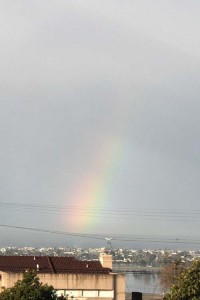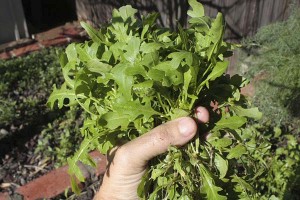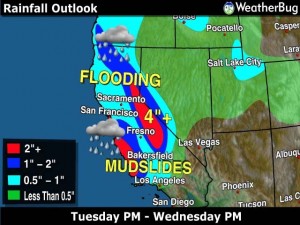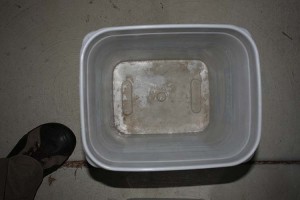
Some people think that conversation has run dry when you start talking about the weather. They’re obviously not gardeners–or even golfers or joggers or construction workers. Weather matters. And I can’t think of many things nearly as fascinating.
Here in the far southwestern corner of the country it’s been dry. Scary dry, almost. I have buckets below the eaves to catch and save runoff from the roof, and even last week’s “big rain” day didn’t fill them more than half way. At least the storm had the decency to drop some rain by the time I was leaving work so that I didn’t feel like a fool for bringing an umbrella and taking the car instead of riding my scooter.
Today we’re in Day Two of a several days of predicted light rain. I’ll keep my fingers crossed.

It’s not that I don’t appreciate the sunny days. Last month we picked a bright weekend–we had many choices–to head east, into the desert. Destination: Salvation Mountain.
I’m about as religious as Howard Stern is subtle, but you couldn’t not to feel the earnestness of this big pile of folk art.

The whole installation is built into a hillside, using not much more than haybales, mud and paint. As we walked over it you could hear things crunching underfoot. Without constant maintenance the whole thing would start to degrade into the desert around it.

This is a polaroid that someone had left showing Leonard Knight, the man who built this. He gave me a detailed personal tour the last time I visited, maybe five years ago. But the news reports last fall mentioned that Mr. Knight’s dementia was taking over, and he had been institutionalized in a facility in El Centro. For an artwork as fragile as this is, it seemed like this winter might be the last time to see the place in the state that he left it, before the desert claimed it.
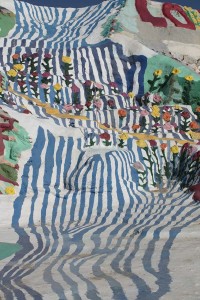
The side of the Mountain that faces west is crossed by a painted yellow path up the mountain that you can see in this image, the Yellowbrick Road.

I’m not sure what the main highway from the Wizard of Oz has to do with the Christian messages being communicated, but there it is. Please stay on it.

People bring stuff here. This bible, blowing in the wind, fits right in.
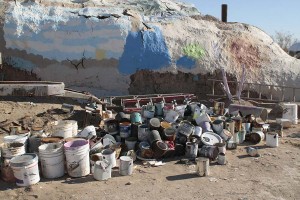
Something else people bring here is paint, thousands of gallons of it. Used to be, you came to Salvation Mountain, you’d bring a bucket of paint. It was a great way to share paint leftover from projects. The word now, though, is that people should leave their paint at home, now that Mr. Knight isn’t able to do anything with it.

Built into one size are a series of grottoes that appear to have been built as little shrines. On a scorching midsummer day these spaces are a cool escape. People have brought contributions here too, but I’m not sure if the angel and bowling trophies were original to Leonard Knight’s original vision.
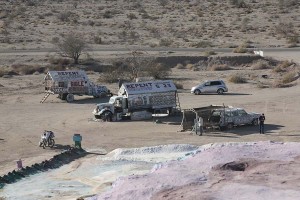
Parked in front are several art cars that have been customized by Mr. Knight. At this point I’m sure they’re fixed sculptures and no longer mobile.
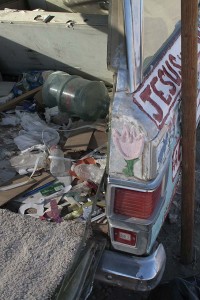
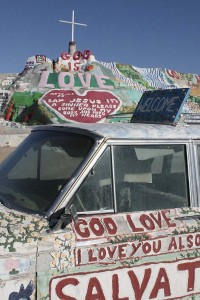
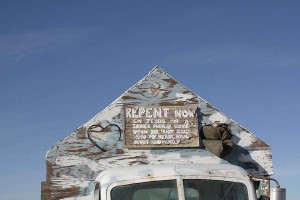
[ Details of the art cars… ]

Another feature of the Mountain is the side maze-feature, made of telephone poles, salvaged trees and more haybales, mud and paint. It’s hard to photograph but would work great as a video shown from inside as you walk through it.
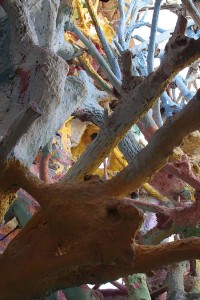
Here’s a view from inside the maze, looking up.
As long as we were way out in the desert, we stopped by the shores of the Salton Sea, just a couple miles away.
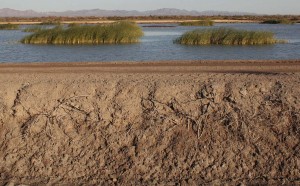
Part of the south shore is set aside as the Sonny Bono Salton Sea National Wildlife Refuge. (Yes, that Sonny Bono, Cher’s late ex.) You don’t see any in this picture, but birds were everywhere. You hear about the Pacific Flyway but it’s always a stunning experience to visit one of the main avian truckstops along the route.

And with this image we return to the theme of rain and water. This viewpoint is a fairly famous one. I’ve seen a few photos shot from here, with trees covered in birds and still water below, reflect birds and trees. (I have a few old shots myself.) But that was probably ten years ago.
Southern California has been drawing increasing amounts of water that was formerly used by farmers around the Sea. With less agricultural runoff to feed it, the water level has been dropping, so that the Sea itself is now a quarter mile away.
My little buckets of water, plaintively waiting for the rain, probably will do next to nothing to restore the Salton Sea. But a drop in the bucket is more than nothing at all.
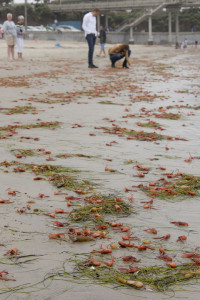
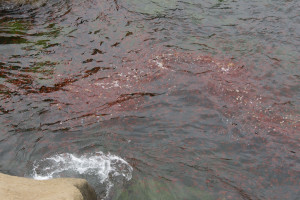
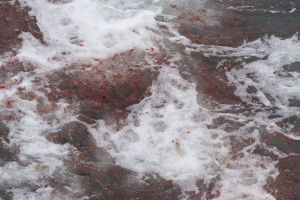
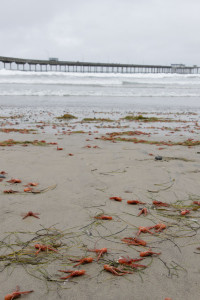
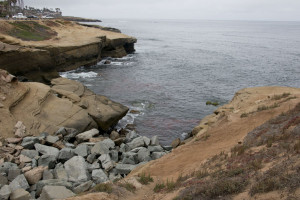
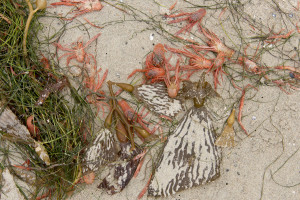
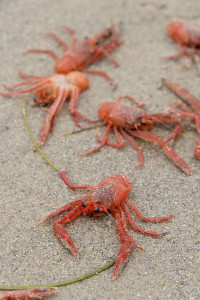


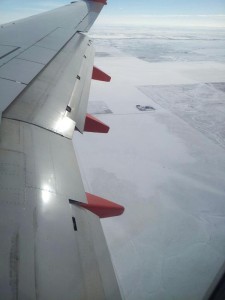
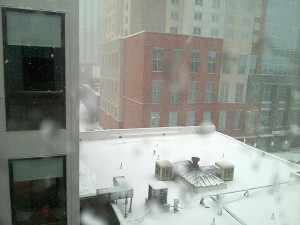
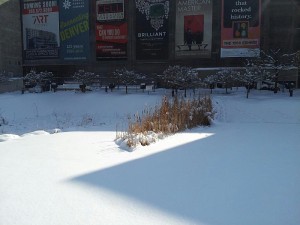
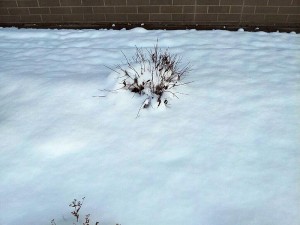
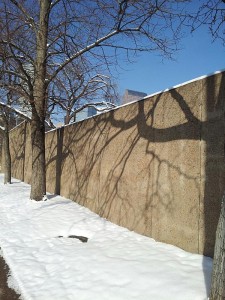
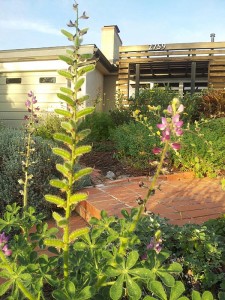
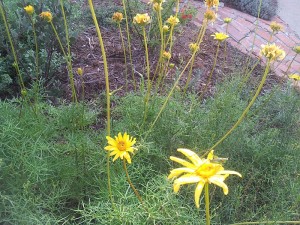

















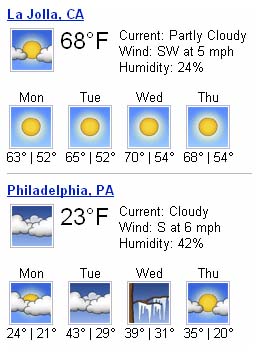
 [
[  [
[ 